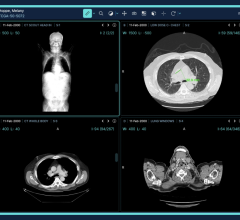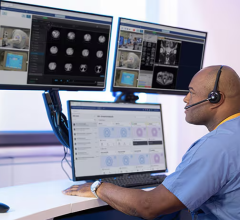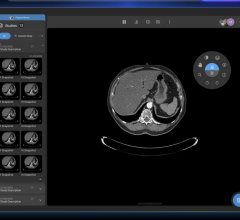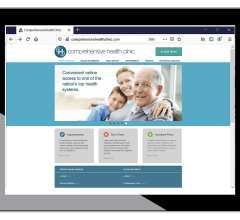
The impact teleradiology services have had on the radiology community is vast and well-known. Radiologists no longer have to take call at night and no longer face tedious drives from location to location to read studies on site. Subspecialty reads are available for smaller or more remote groups, overflow coverage is provided for overworked radiologists, preliminary reads are accessible for stat reads and final reports are handy to alleviate a large pile of studies that accumulates after hours. However, as of late, some negative impacts of teleradiology services are coming to light. Radiology groups need to be keenly in tune not only with their hospital partners but also with their teleradiology provider.
As large, publicly traded teleradiology companies hit a competitive wall in the preliminary reads market, they must seek out new sources of revenue to satisfy both shareholders and Wall Street. Competition is fierce, and it has become common for radiology groups to be pitched by a teleradiology vendor on an almost daily basis. Prices have declined somewhat in the past two years, and teleradiologists cannot be expected to safely interpret higher volumes of exams. Given the current economic climate, how can corporate telerad firms keep their stock’s buy recommendation and continue to demonstrate growth? Diversifying their business seems like a reasonable approach, but at what cost to their clients?
New Service Offerings
From a single teleradiology provider, groups can now enjoy preliminary, final, and subspecialty reads, 3D post-processing services, billing services, PACS systems and more. Yet these new offerings still pale in comparison to the revenue generated by traditional overnight teleradiology services. Wide-scale roll outs of teleradiology PACS or daytime final reads have been a tough sell, and many are now looking to hospital administrations as potential customers. More and more teleradiology vendors are bypassing the local radiology group and are trying to sell services directly to the hospital or hospital system. From a business perspective it makes sense, however, from a professional perspective, corporations are infringing on the practice of medicine by local radiologists.
Radiology groups in various parts of the country have now been displaced by teleradiology providers or by MBA/JD run “radiology groups” designed to squeeze increasing profits out of the system. The very same companies that were invited into the hospital medical staff to assist with coverage now have a back door into the hospital, and some are using it as a Trojan horse. With teleradiologists already on the hospital medical staff, DICOM systems already set up in the IT department and with the need for minimal on-site staffing, teleradiology companies are in a position to respond to RFP’s or hint at alternatives when speaking with hospital administration.
All Providers are Not Created Equal
Localized, smaller teleradiology providers typically form a closer relationship with radiology groups and support local practices in any way possible. While companies such as StatRad have the same cafeteria plan of offerings, hospitals and IDTF’s (independent diagnostic testing facilities) are never pitched for new sources of revenue. Instead, they look to their radiology group partners and provide assistance when asked. As requests stemming from parties outside of the radiology groups increase, it is extremely important that your teleradiology partner is unwavering in their support and dedication to the groups needs. Some of the local, small teleradiology providers have declined all RFP’s, opportunities to read for non-radiologist owned IDTF’s that are looking to save money on professional interpretations and pricing inquiries directly from hospitals. In every case, the local telerad group should contact the radiology group and ask what they can do to help with their practice. In many cases, refusing to respond to these predatory requests is help enough by not reducing the group’s negotiation power. If a hospital cannot hold another “option” over a local group’s head, they can work together on a more level playing field.
In other cases, groups may elect to utilize many of the teleradiology tools and systems developed by local group, including StatRad, to obtain the same efficiencies within their practice. They may want assistance to support offsite radiologists, centralized worklists, need additional staffing or introductions to other groups to create possible synergies. It is the support for local radiology groups and radiologists that has made local telerads successful. Of course, there are those that simply want to save as much money as possible. However, the costs that will inevitably result from receiving poor services combined with the potential predatory threat can quickly exceed the minimal savings.
A promise to clients and their patients
Over 14 years ago, several groups in San Diego got together with the common goal to share call and reduce the number of physicians staying up at night in the community. As radiologists themselves, StatRad’s founders not only understood the intricacies of the profession, they desired to create a business model that revolved around a firm, ethical commitment to truly assist radiology groups and enhance service offerings – never to replace them entirely.
By using this promise as a foundation for the business, local telerads can gain the trust of radiology practices, resulting in enhanced, lasting and personal relationships with clients. Remaining a privately-held company, allows a teleradiology groups avoid adopting predatory practices and stealing contracts from those you work with and for. Unfortunately, in today’s world of heavy corporatization, this approach of offering non-competitive contracts is becoming the exception, not the rule.
All those involved in the healthcare industry should be most concerned with providing quality care that ultimately benefits the patient. When large, publicly-traded teleradiology providers become involved, this important goal can disappear behind miles of red tape and demands for profits fostering potentially dangerous situations.
A call to action
In the end, hospitals want to have radiologists on site, ED physicians desire to speak with the radiologists in person, hospital staffs want to know the radiologist caring for their patients and local radiology groups want to provide high-quality patient care.
As the threat of predatory teleradiology practices becomes the topic of discussion at more and more group meetings, it is essential that these groups make every effort not to support these business models. Switching to teleradiology partners that work for interests of the profession and the patient will ultimately protect the practice resulting in close partnerships that will allow for increased efficiencies within the group.
During these trying financial times, major emphasis has been placed on reducing healthcare costs, making it even more difficult to place emphasis on quality over price. In the long run, the cost of losing a hospital contract or even competing with a vendor’s prices will have a serious impact on practices. Don’t continue to prop up these predatory companies by pushing business their way. Teleradiology companies were intended to provide supplemental coverage and solutions. Those that don’t stay in that market will continue to erode more and more components of radiology groups’ practices. Teleradiology companies were not intended to be publicly traded entities constantly preoccupied with increasing shareholder wealth but should provide patient care and strive to improve the client’s stability.
About the Author
Joe Moock is the CEO at StatRad, a provider of teleradiology solutions. Headquartered in San Diego, StatRad’s U.S.-trained, board-certified radiologists and staff deliver interpretations and programs that increase efficiency and improve patient care. Their services are designed to allow hospitals and healthcare groups to save money, supplement staffing, satisfy hospital clients, and maintain control.


 November 06, 2025
November 06, 2025 









